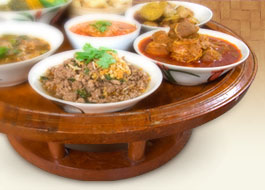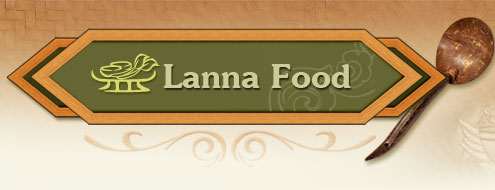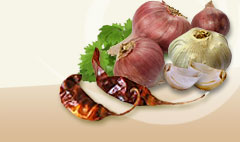Cumin |
|
|
 | Cuminum cyminum |
|
| |
 | Umbelliferea |
|
| |
 | Cumin |
|
| |
 | Tian khao (Northern) (Rattana Phromphichai, 1999, p. 2890), horapha chang, ka phrao khuai (Central), la (Southern). (Kanchana Diwiset, et al., comp., 1999, p. 233) |
|
| |
 | Biennial shrub 50-30 cm. high, branched, small twigs in the first year, flowering and producing fruit in the second year. Leaves simple, alternate, opposite, serrated, acuminate, rough. Inflorescence spike, terminate, small 50-100. Fruit ovate, obtuse 1 mm. in diameter, light brown. (Kanchana Diwiset, et al., comp., 1999, p. 233) |
|
| |
 |

No nutrition information available.
Food: Leaves are used in yam nuea, yam mu to get rid of the unpleasant odor and also used in spice mix for pha lo, beef noodles, masamam and kaeng pa. (Kanchana Diwiset, et al., comp., 1999, p. 233) Lanna cooking uses the young leaves and shoots as a vegetable for lap with all kinds of meat. |

The stems and roots used to improve digestion, induce the passing of wind, reduce stomachache and flatulence. (Kanchana Diwiset, et al., comp., 1999, p. 233)
In Lanna Pharmaceuticals used to boost fertility. (Rattana Phromphichai, 1999, p. 2890)
|
|
| |
 | All year round |
|
| |
 |
Kanchana Diwiset, et al., comp. (1999). Phak Phuen Ban Phak Klang. Kanchana Diwiset, ed. Nonthaburi: Project for Text Development, Institute of Traditional Thai Medicine. Rattana Phromphichai. (1999). Thian Khao. in Saranukrom Wattanatham Thai Phak Nuea. (Vol 6, p. 2890). Bangkok: Siam Commercial Bank Foundation for the Encyclopedia of Thai Culture. |
|
| |
|
|




